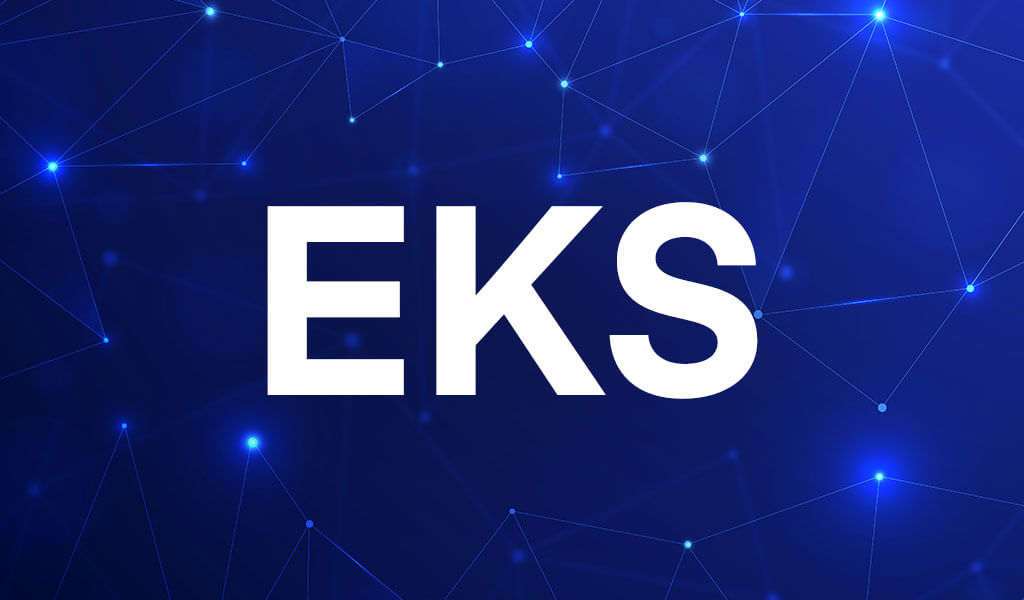EKS, Elastic Kubernetes Service by AWS is presently the most popular Kubernetes service available on public clouds, running thousands of clusters and applications for businesses globally. EKS is great if you’re looking to run in a single cloud and have no hybrid or multi-cloud kubernetes requirements or if you happen to be an existing AWS user and looking to take your first steps in learning kubernetes. EKS, alongside AKS and GKE are driving Kubernetes adoption around the world and today Platform9 is taking our first step in expanding our SaaS platform, as well as our managed service, to include support for these services by adding the ability to import EKS.
With the release of Platform9 Managed Kubernetes 5.1 we have introduced the ability to import existing EKS clusters. Once connected to Platform9 your EKS clusters will appear alongside your clusters running on-premises using BareOS and your cloud native clusters running in AWS or Azure; AWS Native Clusters and Azure Native Clusters, delivering platform clarity and manageability across all your Kubernetes clusters.
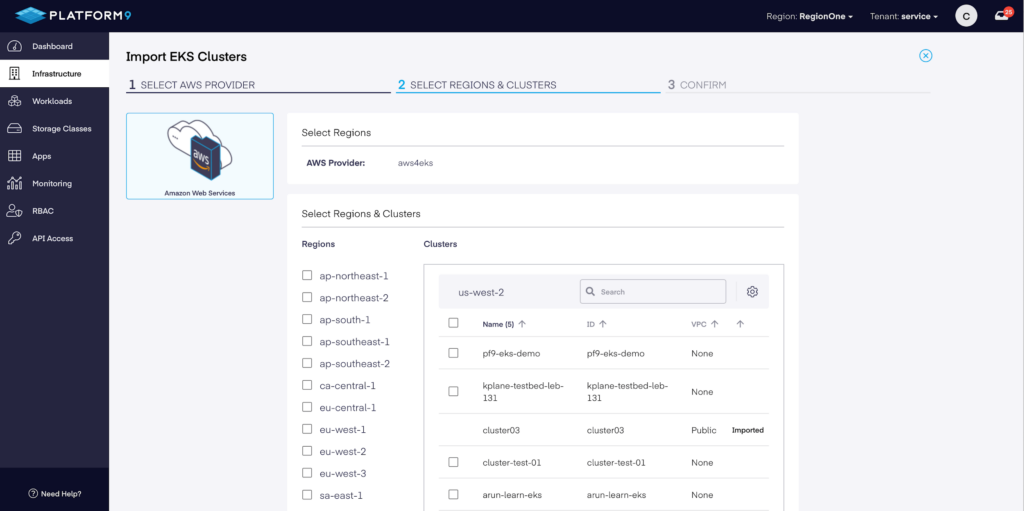
Importing an existing EKS cluster can be done in 3 steps; first by adding a AWS Cloud Provider that has access to your clusters, then selecting your required regions and finally importing the clusters.
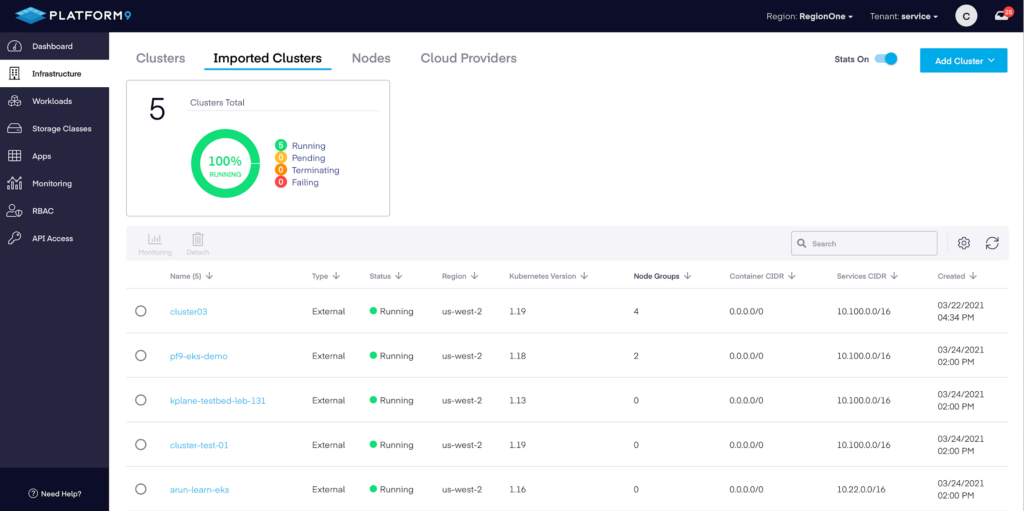
When a cluster is connected to your SaaS Management Plane you will see it under the Imported Clusters tab on the Infrastructure dashboard where you can drill into the cluster to explore node groups and view the cluster’s EKS configuration.
Watch a Short Demonstration of the Import
What can you do once an EKS Cluster is Connected?
With Platform9 BareOS (VM or physical server), AWS Native and Azure Native Clusters we deploy and then manage the entire lifecycle of the cluster including capabilities like
- Self-healing of docker,
- Zero-downtime rolling upgrades
- Remote monitoring
- Management of MetalLB and more
As EKS provides a similar lifecycle experience we decided to launch with a focus on application and workload management vs investing in duplicating administrative tasks that can be easily executed natively in AWS.
With an EKS cluster connected you can take advantage of the following Platform9 capabilities:
- Centralized Monitoring
- Workload Management
- Global Application Management
Centralized Monitoring
Platform9 provides a centralized globally accessible view of events impacting your Kubernetes clusters. This is achieved by deploying the Platform9 Monitoring add-on which operates Prometheus, Alertmanager and Grafana and collecting the alarm data across all clusters.

The monitoring deployment is also accessible directly from Platform9, including for EKS clusters. The Grafana dashboards can be opened remotely in a single click and allow you to diagnose cluster issues no matter where you find yourself; at home, in the office or at football game.
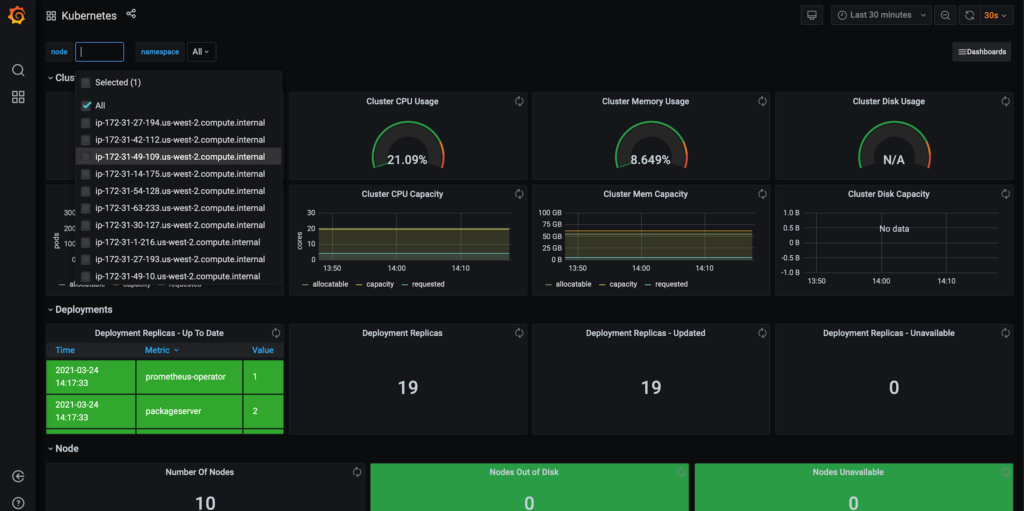
Workload Management
There are a number of ways to interact with a Kubernetes cluster, Kubectl, directly accessing the API Server, the Kubernetes ‘Dashboard’ or via Platform9. Once an EKS cluster is connected all of the Namespace, Pod, Deployment and Services data is accessible from the SaaS Management Plane. This removes the need to open up multiple kubernetes dashboards, connect to VPNs for secure access or run a multitude of Kubectl commands. From the Workloads dashboards you can view the state of any Pod, immediately access the container logs and compare configurations across clusters, helping to save time when you’re under pressure and trying to resolve application issues quickly.
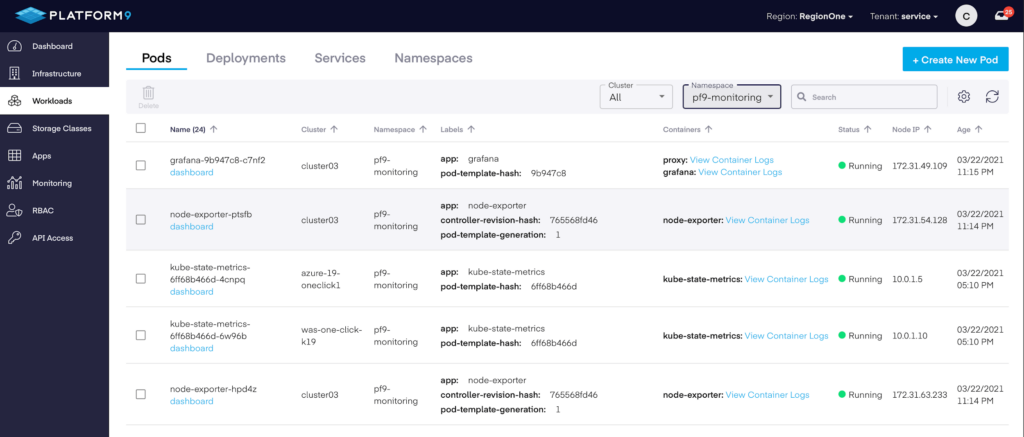
Global Application Management
Ever tried to quickly deploy or update the same app across edge, private and public cloud clusters? At a minimum you will need the Kubeconfig for each cluster, a method to manage each config and Helm 3 installed on your local machine. Alternatively, Platform9 now runs Helm 3 in the SaaS Management Plane, providing one-click deployment of thousands of containerized applications from public and private Helm Repositories.
The global app service is new in the 5.1 release and allows you to connect to any Helm repository and then securely deploy the applications to any cluster.
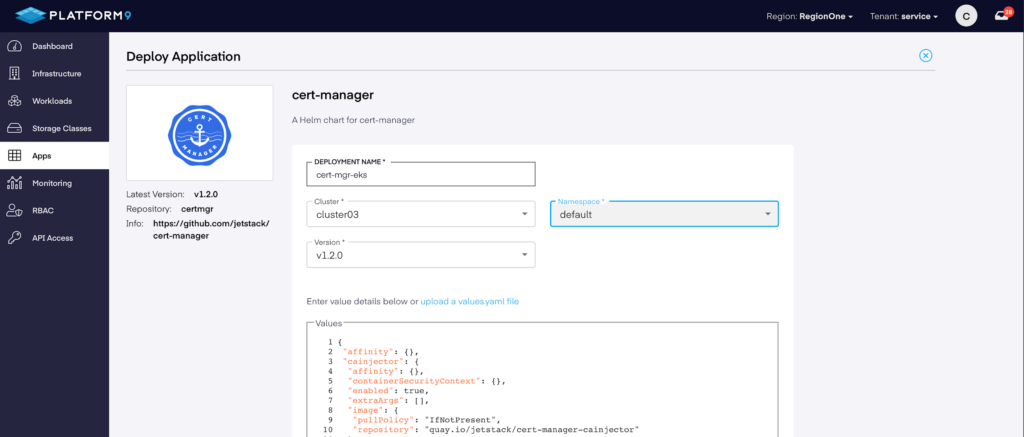
With Platform9 and EKS you quickly standardize cluster management and simplify your operations workflows.
What’s next?
Over the coming months we will be working to introduce management of both Microsoft AKS and Google Cloud GKE clusters, building the only SaaS Managed Kubernetes platform that will be capable of remotely managing clusters across edge, private, public and hyper-scale cloud services.
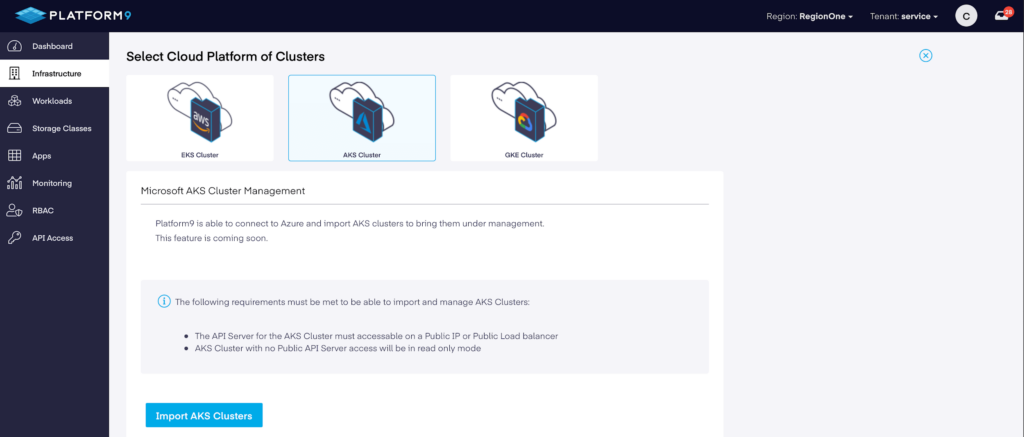
Detailed documentation on the EKS cluster management is available here: https://docs.platform9.com/kubernetes/eks-cluster-management
